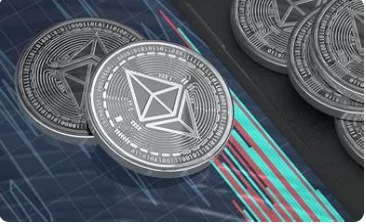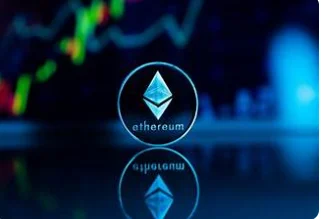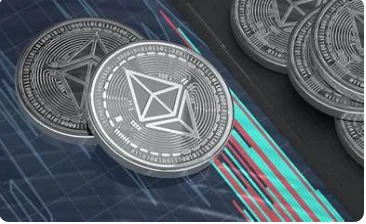Ethereum Explained: Smart Contracts, ETH Utility & DeFi Use Cases
What Is Ethereum? (And Why It’s More Than Just Crypto)
Ethereum isn’t just another coin. It’s the backbone of Web3, the sandbox for smart contracts, the fuel behind DeFi, NFTs, DAOs, and everything crypto-native. Launched in 2015 by Vitalik Buterin (yes, the hoodie-wearing genius), Ethereum set out to do what Bitcoin couldn’t — become programmable money and a decentralized app platform. Fast-forward to today, and it’s powering billions in locked value, thousands of dApps, and a whole new financial paradigm.

ETH: Digital Fuel, Not Just Digital Gold
Bitcoin is often called “digital gold.” Ethereum? Think of it as “digital oil.” ETH is the native currency of the Ethereum network — used to pay for transactions, deploy smart contracts, and stake for network security. It’s not just a store of value — it’s the engine that keeps the decentralized world running.
Smart Contracts: Code That Cuts Out the Middleman
Ethereum’s killer feature is smart contracts — self-executing code that enforces agreements without lawyers, banks, or trust. Want to swap tokens, rent digital land, or launch a DAO? Smart contracts make it happen. They’re transparent, immutable, and trustless — which is crypto-speak for “no one can rug you if the code is solid.”
How Ethereum Works (Without the Buzzwords)
Ethereum runs on a decentralized network of nodes — computers that validate transactions and execute smart contracts. Every action is recorded on the blockchain, a public ledger that’s tamper-proof and transparent. The Ethereum Virtual Machine (EVM) ensures that code runs the same way everywhere, making it the universal backend for Web3.
More technical breakdown here: How Ethereum Works
Ethereum Mining? That’s So 2021

Ethereum used to rely on Proof of Work (PoW), where miners solved puzzles to validate blocks. But since “The Merge” in 2022, it’s all about Proof of Stake (PoS). Now, validators stake ETH to secure the network — cutting energy use by 99.95% and making Ethereum greener than your local farmer’s market.
Why Ethereum Is a Developer’s Playground
- Build dApps (decentralized apps) without asking permission
- Launch your own tokens (ERC-20, ERC-721, ERC-1155)
- Deploy DAOs, DeFi protocols, NFT marketplaces, and more
Ethereum isn’t just a coin — it’s a programmable ecosystem. If Bitcoin is a calculator, Ethereum is a full-blown computer.
Ethereum vs. Bitcoin: Quick Comparison
| Feature | Ethereum (ETH) | Bitcoin (BTC) |
|---|---|---|
| Launch Year | 2015 | 2009 |
| Purpose | Smart contracts, dApps, programmable money | Digital store of value |
| Consensus | Proof of Stake (PoS) | Proof of Work (PoW) |
| Energy Usage | Low (post-Merge) | High |
| Token Utility | Gas fees, staking, governance | Payments, store of value |
| Developer Ecosystem | Massive (2,100+ full-time devs) | Smaller |
Sources:
DeFi: Ethereum’s Financial Revolution
Ethereum powers over 50% of the $223B locked in DeFi protocols. From lending platforms like Aave to decentralized exchanges like Uniswap, Ethereum is the infrastructure behind the new financial system — one that doesn’t care about your credit score or banking history.
Ethereum 2.0: Faster, Cheaper, Greener

Ethereum 2.0 isn’t just a rebrand — it’s a full upgrade. With PoS, sharding, and rollups like Arbitrum and Optimism, Ethereum is scaling to handle millions of transactions with lower fees. The Dencun upgrade (2024) slashed rollup costs by 90%, making dApps more affordable and accessible.
Gas Fees: The Price of Crypto Freedom
Every transaction on Ethereum costs gas — a fee paid in ETH. It’s like paying tolls on a decentralized highway. Gas fees fluctuate based on network demand, and during NFT drops or DeFi hype, they can spike hard. But with Layer-2 solutions and EIP-1559 burning ETH, fees are becoming more predictable and deflationary.
Investing in ETH: Hype or Hedge?
ETH isn’t just a speculative asset — it’s a utility token, governance tool, and staking reward. While Bitcoin dominates headlines, Ethereum quietly powers the infrastructure of Web3. With ETH burned during transactions and staked for security, its supply is deflationary — a bullish signal for long-term holders.
Ethereum FAQ: Real Questions, Real Answers
Is Ethereum a good investment in 2025?
Ethereum remains one of the most actively used blockchains in the world. With ETH supply becoming deflationary post-Merge and staking yields averaging 4–6% annually, many analysts see ETH as both a utility asset and a long-term hedge. But remember: crypto is volatile, and ETH is no exception.
Can Ethereum reach $10,000?
It’s possible — but not guaranteed. ETH has strong fundamentals: massive developer activity, institutional interest, and real-world utility. If Layer-2 adoption continues and ETH becomes the backbone of tokenized finance, $10K isn’t just hopium — it’s a plausible scenario.
What’s the difference between Ethereum and Ethereum Classic?
Ethereum Classic (ETC) is the original chain that continued after the 2016 DAO hack. Ethereum (ETH) chose to hard fork and reverse the hack. Today, ETH has far more developer support, usage, and upgrades. ETC is mostly a legacy chain with limited adoption.
How do I stake Ethereum?
You can stake ETH directly via the Beacon Chain or through platforms like Lido, Coinbase, or Rocket Pool. Minimum direct stake is 32 ETH, but liquid staking lets you start with less. Staking helps secure the network and earns passive rewards.
Is Ethereum deflationary now?
Yes. Thanks to EIP-1559 (which burns a portion of gas fees) and the shift to PoS, Ethereum’s net issuance has turned negative during high network activity. Translation: ETH supply is shrinking — bullish for long-term holders.
Hidden Facts About Ethereum You Didn’t Know
- Ethereum processes over 1 million transactions per day — more than Bitcoin and most blockchains combined.
- Vitalik Buterin wrote the Ethereum whitepaper at age 19 — while traveling across the world and blogging about crypto.
- Post-Merge, Ethereum’s energy consumption dropped by 99.95%, making it greener than Visa or PayPal.
- Ethereum has over 3,000 active developers — more than any other blockchain ecosystem.
- ETH’s supply peaked in 2022 and has been slowly decreasing ever since due to fee burns and staking lockups.
What can you actually do with Ethereum?
- Launch your own cryptocurrency (ERC-20 token)
- Mint and trade NFTs (ERC-721, ERC-1155)
- Build decentralized finance apps (DeFi lending, staking, swaps)
- Create DAOs for community governance
- Run decentralized identity systems and verifiable credentials
- Tokenize real-world assets (RWAs) like real estate or stocks
Sources: Ethereum Foundation, DappRadar, Messari
Ethereum in Culture: Meme Energy & Market Psychology
Ethereum isn’t just tech — it’s culture. From “gas wars” during NFT drops to “merge memes” and “ETH maxis,” the Ethereum community blends code with chaos. Reddit threads, Twitter spaces, and Discord DAOs form a decentralized brain trust that drives innovation — and sometimes drama.
ETH holders joke about “ultrasound money,” but behind the memes is a serious thesis: Ethereum is evolving into a deflationary, scalable, programmable layer for global finance. And yes, it still has doge memes — just with more math.
Final Thoughts: Ethereum Is a Bet on the Future
Ethereum isn’t just a coin — it’s a movement. A bet on open finance, decentralized governance, and programmable value. Whether you’re a developer, investor, or curious newcomer, ETH offers exposure to the infrastructure of tomorrow’s internet.
But it’s not risk-free. Gas fees, regulatory uncertainty, and competition from faster chains like Solana and Avalanche are real. Still, Ethereum’s network effects, developer loyalty, and upgrade roadmap make it a top contender for long-term relevance.
Ready to dive deeper?
Explore our full guide on Ethereum fundamentals, or check out our breakdown of DeFi protocols built on Ethereum. Whether you’re here for the tech, the tokens, or the memes — Ethereum’s got something for you.
Disclaimer / No Liability
We are not financial advisors and assume no responsibility for any decisions you make.
Cryptocurrencies are highly volatile and risky. You may lose all invested capital.
Always do your own research (DYOR) and consult qualified professionals before making any financial or legal decisions.
We make no guarantees regarding the accuracy, completeness, or reliability of the information provided.
References to third-party services or projects do not imply endorsement.
By using this site, you agree that all actions are at your own risk and you release the site owners and authors from any liability.
